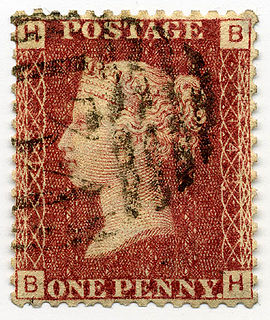
Philately is the study of postage stamps and postal history. It also refers to the collection, appreciation and research activities on stamps and other philatelic products. Philately involves more than just stamp collecting or the study of postage; it is possible to be a philatelist without owning any stamps. For instance, the stamps being studied may be very rare or reside only in museums.

Stamp collecting is the collecting of postage stamps and related objects. It is an area of philately, which is the study of stamps. It has been one of the world's most popular hobbies since the late nineteenth century with the rapid growth of the postal service, as a never-ending stream of new stamps was produced by countries that sought to advertise their distinctiveness through their stamps.

A cancellation is a postal marking applied on a postage stamp or postal stationery to deface the stamp and to prevent its reuse. Cancellations come in a huge variety of designs, shapes, sizes, and colors. Modern cancellations commonly include the date and post office location where the stamps were mailed, in addition to lines or bars designed to cover the stamp itself. The term "postmark" refers specifically to the part that contains the date and posting location, but the term is often used interchangeably with "cancellation" as it may serve that purpose. The portion of a cancellation that is designed to deface the stamp and does not contain writing is also called the "obliteration" or killer. Some stamps are issued pre-cancelled with a printed or stamped cancellation and do not need to have a cancellation added. Cancellations can affect the value of stamps to collectors, positively or negatively. Cancellations of some countries have been extensively studied by philatelists, and many stamp collectors and postal history collectors collect cancellations in addition to the stamps themselves.

Philatelic literature is written material relating to philately, primarily information about postage stamps and postal history.
The Scott catalogue of postage stamps, published by Scott Publishing Company, now a subsidiary of Amos Media, is updated annually and lists all the stamps of the world that its editors recognize as issued for postal purposes. It is published in fourteen large volumes that include twelve volumes containing all the countries of the world that have ever issued postage stamps, the United States Specialized Catalog, and the 1840–1940 Classic Specialized Catalogue. It is also produced in non-printable CD and DVD editions. The numbering system used by Scott to identify stamps is dominant among stamp collectors in the United States, Canada and Mexico.
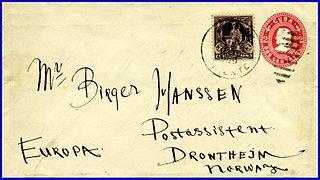
A stamped envelope or postal stationery envelope (PSE) is an envelope with a printed or embossed indicium indicating the prepayment of postage. It is a form of postal stationery.
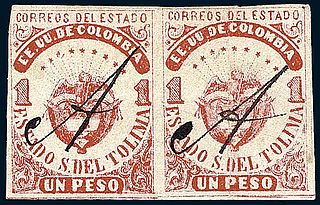
In philately, a pen cancel – symbol ⟨⟩ – is a cancellation of a postage or revenue stamp by the use of a pen, marker or crayon.

A stamp catalog is a catalog of postage stamp types with descriptions and prices.

Eastern Rumelia or Eastern Roumelia was an autonomous province (vilayet) in the Ottoman Empire from 1878 to 1908; however, it was under Bulgarian control beginning in 1885. The province is remembered today by philatelists for having issued postage stamps from 1881 on, although a postcard was issued locally for internal use in 1880.
A joint issue is the release of stamps or postal stationery by two or more countries to commemorate the same topic, event or person. Joint issues typically have the same first day of issue and their design is often similar or identical, except for the identification of country and value.
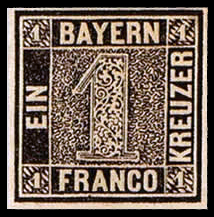
This is a survey of the postage stamps and postal history of Germany and philatelically related areas. The main modern providers of service were the Reichspost (1871–1945), the Deutsche Post under Allied control (1945–1949), the Deutsche Post of the GDR (1949–1990), the Deutsche Bundespost (1949–1995), along with the Deutsche Bundespost Berlin (1949–1990), and are now the Deutsche Post AG.

The Deutsche Bundespost Berlin was the name used on the stamps of West Berlin. It sounds similar to the name of the Western German postal services Deutsche Bundespost and was de facto a dependency of it. De jure, it was independent and was called Landespostdirektion Berlin. The governmental agency to provide mail and telecommunication services for West Berlin. This civil service agency was in operation from 1949 until 1990.

Germania stamps are definitive stamps that were issued by the German Empire and the Weimar Republic between 1900 and 1922, depicting Germania. They represent the longest running series in German philately and are in their many variations and derivations an essential part of German philatelic collections.
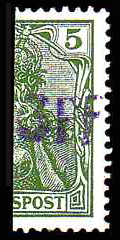
The Vineta Provisional is a German postage stamp made on 13 April 1901 on board the cruiser SMS Vineta. The postal officer had not been supplied with 3 Pfennig Germania stamps, so he bisected his 5 Pfennig stamps and stamped them by hand with a "3 PF" mark. Mail with the Vineta provisional stamp was sent from Pernambuco to Germany on 17 April 1901. Only 600 stamps were issued, making this provisional stamp one of the rarer stamps in German philately.
The Fischer Catalogue of Polish stamps is a yearly publication in catalogue form of postage stamps relating to Poland.
The Ruch catalog of postage stamps of Poland, officially titled Ilustrowany Katalog Znaczków Polskich, contained detailed information on Polish postage stamps, and was published on a yearly basis.

This is a survey of postage stamps and postal history of the German colonies and part of the postage stamps and postal history of Germany, as well as those of the individual countries and territories concerned.

Soviet space exploration history has been well documented on Soviet stamps. These Soviet stamps cover a broad spectrum of subjects related to the Soviet space program. While much of the focus has been placed on the nation's notable "firsts" in space flight, including: Earth orbiting satellite, Sputnik 1; animal in space, the dog Laika on Sputnik 2; human in space and Earth orbit, Yuri Gagarin on Vostok 1; first spacewalk, Alexei Leonov on Voskhod 2; woman in space, Valentina Tereshkova on Vostok 6; Moon impact, 1959, and uncrewed landing; space station; and interplanetary probe; numerous stamps have paid tribute to more general astronomical topics as well.

The first stamp of the Russian Empire was a postage stamp issued in 1857 and introduced within the territory of the Russian Empire in 1858. It was an imperforate 10-kopeck stamp depicting the coat of arms of Russia, and printed using typography in brown and blue.
















